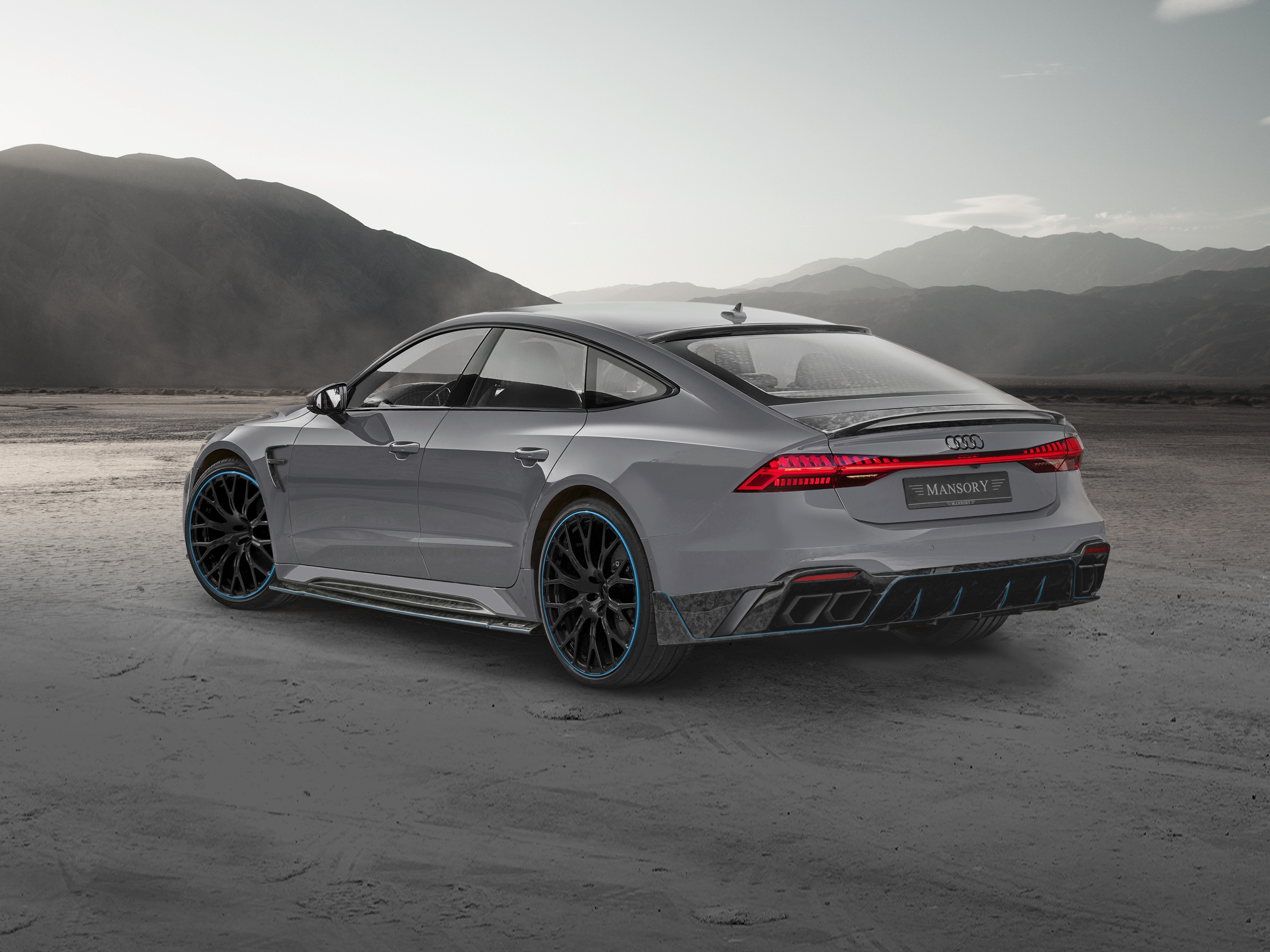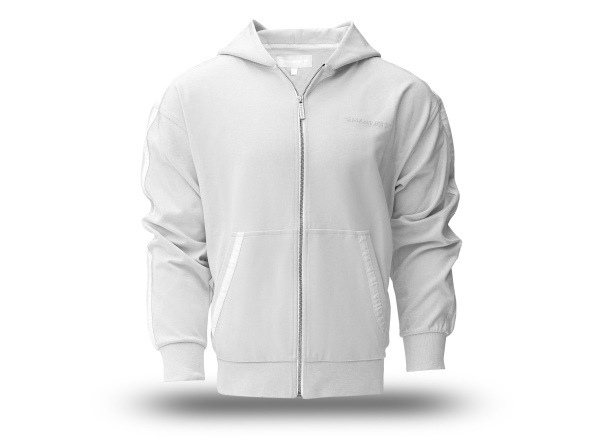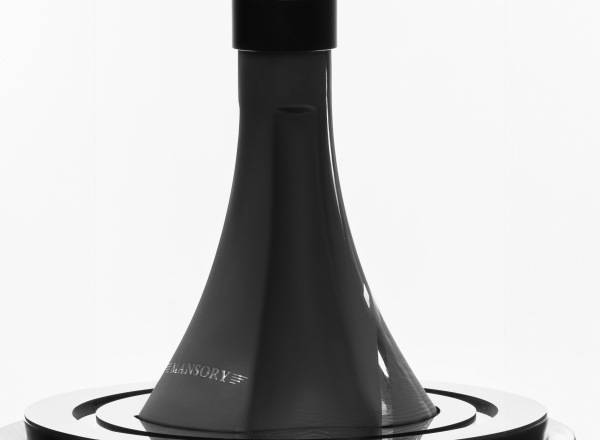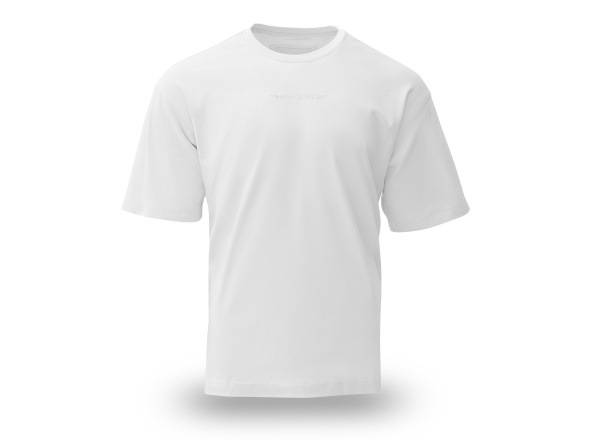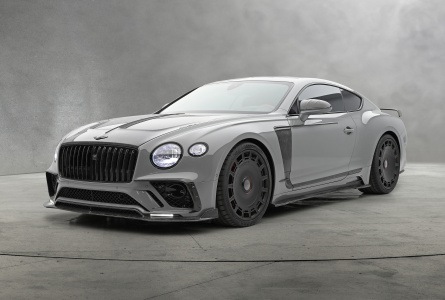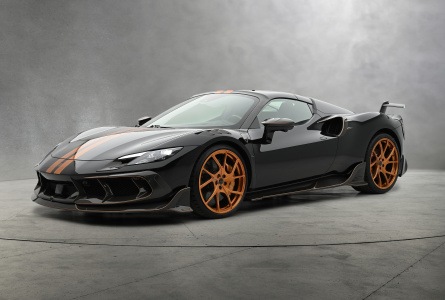AUDI RS7


MANSORY expands its Audi portfolio with the RS7.
The programme for the RS7 covers four main areas of customization: Design / Wheels / Interior / Performance
The most important facts about the MANSORY RS7 in brief:
- Add-on-Applications in carbon
- Modified ECU unit
- Sport air filter
- New, bigger turbocharger
- High performance exhaust system
- Interior design in full leather lack/blue
- Wheels - new wheel and tyre combination
- Power increase to 780 PS and 1,000 Nm
- Performance: 0-100 km/h in 3,0 s
Design
All add-on-body parts for the Audi RS7 are made of high-quality carbon fibre. Thus, in addition to the new front and side skirts add-on-parts, the add-on-parts on the rear of the car are also made of carbon. These carbon components were all manufactured inhouse in a unique quality that only MANSORY engineers and designers can produce in the highest quality level thanks to their many years of experience.
Wheels
The wheel and tyre combination does technically and visually perfectly match to the impressive conversion either. The fully forged rims type “Y.10" in 11x22 inch ensure both: To manage the massively increased power and the minimisation of unsprung masses.
To further optimise the high grip of the all-wheel RS7, ultra-high-performance tyres in the dimensions 305/25/22 (Continental) are fitted all around.
Interior
The interior has also been completely relined with new leather by MANSORY's own saddlery. Seats, the complete dashboard and other interior components were almost lavishly wrapped in leather, often supplemented with carbon applications and selectively upgraded. The interior is supplied in all colour combinations on request.
Performance
In addition to a modified ECU unit for the engine management system, the MANSORY development department has also modified the V8 twin-turbo with 2 bigger turbochargers, a high-performance exhaust system and a sport air filter to enhance the performance of the Audi RS7 to a higher level. Thanks to this additional power, which has now been increased to 780 bhp (574 KW) and 1,000 Nm, the sprint from 0 to 100 km/h is now in a short 3.0 seconds.
CO2 emissions (combined): 280 g/km / Fuel consumption (combined): 12.5 l/100km
